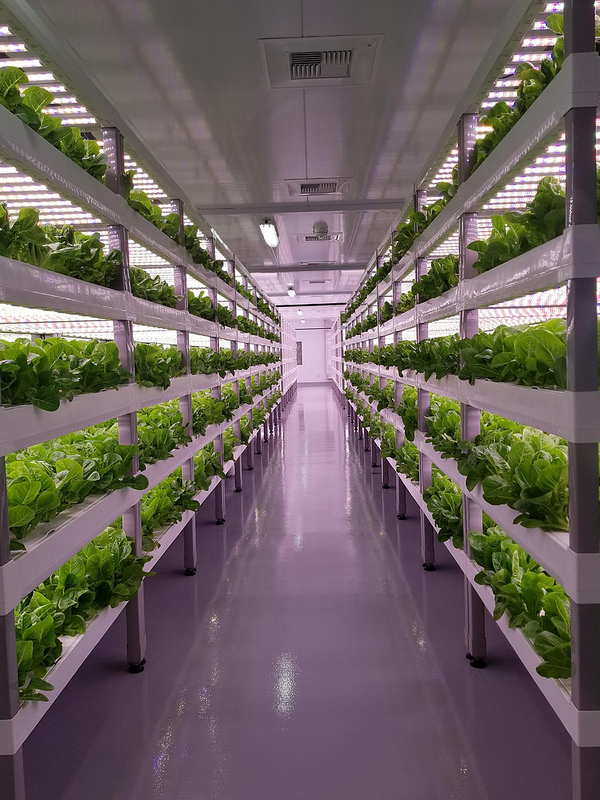Latest Technologies in Indoor Vertical Farming in Australia
Vertical farming is a cutting-edge technology that is set to revolutionize agricultural practices in the future. It is a method of growing crops in controlled indoor environments that can be stacked on top of each other to maximize land use. This technology eliminates the need for traditional soil and creates a more sustainable and efficient way of growing crops. In this article, we will explore the emerging trends in vertical farming that will shape the future of agriculture.
Vertical Farming for the Future

Vertical farming is an innovative technology that is designed to meet the growing demand for food in the future. With the world population projected to hit 10 billion by 2050, traditional agriculture practices will not be sufficient to meet the food demand. Vertical farming, however, has the potential to revolutionize the agriculture industry by providing an efficient and sustainable way of growing crops.
Abstract
Vertical farming is a sustainable agriculture practice that involves growing crops in stacked layers using artificial lighting and climate-controlled environments. This technology enables farmers to grow crops all year round, regardless of weather conditions. It also reduces the need for pesticides, herbicides, and fungicides, as the plants are grown in a controlled environment. Vertical farming has the potential to revolutionize the agriculture industry by reducing the land needed to grow crops, conserving water, and increasing food production. This article explores the emerging trends in vertical farming that will shape the future of agriculture.
Introduction
Vertical farming is an emerging technology that has the potential to change the way we grow crops. This technology involves growing crops in a controlled indoor environment, where factors such as temperature, light, and humidity are tightly regulated. This approach eliminates the need for traditional soil and reduces the risk of pests and disease. Furthermore, vertical farming maximizes land use, making it possible to grow crops in urban areas where land is limited.
The need for vertical farming has become more pressing with the projected increase in the world population. The United Nations estimates that the world’s population will hit 10 billion by 2050. As the population grows, so will the demand for food. Vertical farming presents a solution to this problem by offering an efficient and sustainable way of growing crops.
Content
1. Indoor Agriculture

Indoor agriculture is a form of farming that involves growing crops in controlled environments, such as greenhouses, warehouses, and shipping containers. This method of agriculture eliminates the need for traditional soil and uses techniques such as hydroponics, aeroponics, and aquaponics to grow crops. Indoor agriculture is becoming increasingly popular because it allows farmers to grow crops all year round, regardless of weather conditions. Moreover, it provides a more efficient and sustainable way of growing crops, reducing water consumption and eliminating the need for pesticides and herbicides.
The decarbonization promise of indoor agriculture is still in its early stages, and there is still a lot of room for improvement. However, research has shown that indoor agriculture has the potential to reduce carbon emissions significantly. According to a study by BrightFarms, a US-based hydroponics company, indoor agriculture has the potential to reduce water usage by 80-90% and carbon emissions by 76-98% compared to traditional agriculture practices.
2. Automation

Automation is a key trend in the future of vertical farming. With the high labor costs associated with traditional agriculture practices, automation offers a solution to reduce the operating costs of vertical farms. Automation involves using robots and artificial intelligence to manage different aspects of the farming process, from seed planting to harvesting.
One of the benefits of automation is that it eliminates human error and increases efficiency. For instance, robots can be programmed to monitor the growth of crops, adjust lighting, and dispense nutrients automatically. Moreover, automation allows farmers to operate vertical farms remotely, reducing the need for physical presence on the farm.
3. Sustainable Packaging
Sustainable packaging is a growing trend in the food industry, and vertical farming presents an opportunity to lead the way in this regard. With the increasing awareness of the harmful effects of plastic pollution, sustainable packaging has become a priority for consumers and businesses alike. Vertical farms can play a critical role in this effort by using eco-friendly packaging materials.
One of the sustainable packaging options is compostable packaging made from plant-based materials, such as cornstarch or sugarcane pulp. This type of packaging decomposes naturally and does not harm the environment. Additionally, reusable packaging, such as glass containers, can be an excellent alternative to plastic packaging.
Conclusion
Vertical farming is a technology that has the potential to revolutionize the agriculture industry. With the projected increase in the world population, there is a pressing need for efficient and sustainable ways of growing crops. Vertical farming offers a solution to this problem by providing an innovative way of growing crops in controlled indoor environments. Emerging trends in vertical farming, such as automation and sustainable packaging, have the potential to shape the future of agriculture positively. As this technology continues to evolve, we can expect to see more advanced and sustainable vertical farming practices in the near future.
In conclusion, vertical farming is a technology that has the potential to transform agriculture practices positively. It offers a sustainable and efficient way of growing crops, conserves water, and maximizes land use. The emerging trends in vertical farming, such as indoor agriculture, automation, and sustainable packaging, are crucial elements in the adoption and advancement of this technology. Vertical farming is the future of agriculture, and its potential benefits cannot be understated.

Source image : www.usda.gov

Source image : www.greenbiz.com

Source image : www.intelligentliving.co




